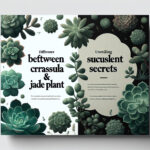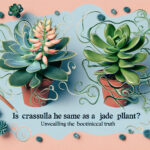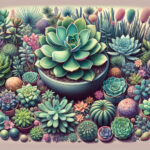Introduction to Crassula and Jade Plants
Welcome, plant enthusiasts and green-thumbed readers! Today, we’re diving into the intriguing world of Crassula and those succulents commonly referred to as jade plants. You’ve likely seen these plump, glossy gems brightening up desks and window sills, but what’s their story? Sustainable living has been all the rage, and incorporating these resilient plants into our homes and offices not only adds a refreshing burst of green but also brings a piece of the great outdoors inside.
Imagine a plant that can thrive with minimal fuss, withstand forgetful waterings, and still forgive you with a flourish of green—the Crassula is just that kind of trooper. It’s a genus that boasts versatility and vigor, making it a favorite in the realm of succulents. On the other hand, jade plants, with their rich jade-green leaves, have graced many a household with their presence, symbolizing prosperity and good fortune. They’re like living sculptures, adaptable and sturdy. Crassula plants, with their myriad of shapes and sizes, seem to echo the diversity of nature itself.
But here’s a little morsel of knowledge to chew on: are Crassula and jade plants one and the same? As we set the stage for a botanical showdown of sorts, it’s time to tickle your curiosity. Let’s get up close and personal with these succulents, unravelling their secrets and celebrating their differences. From their fleshy, moisture-rich leaves to their compact, resilient structures, Crassula and jade plants are a testament to the adaptability of nature. They ask for so little, yet offer so much in return.
Before we delve deeper, take a moment to feast your eyes on this fine specimen of a Crassula plant. Notice its chunky leaves and poised stature—nature’s version of a minimalist masterpiece.
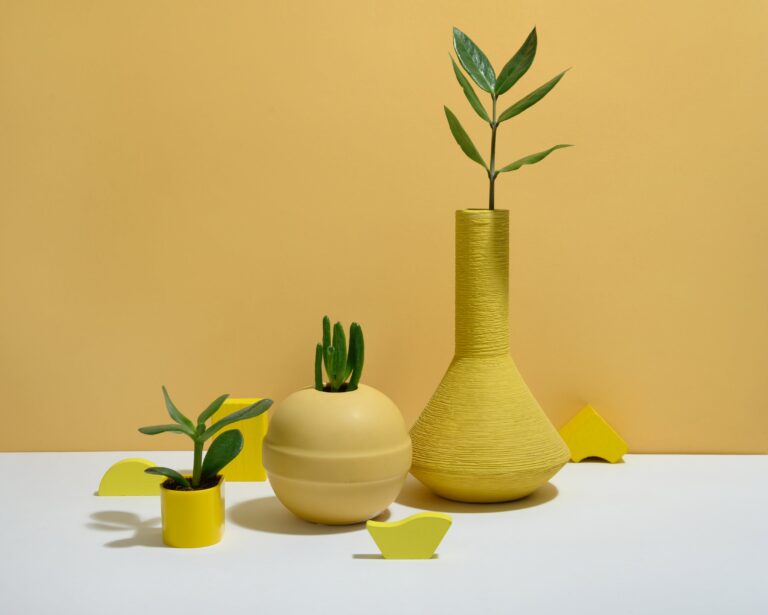
As we cultivate our understanding and appreciation for these plant-world rockstars, remember that the journey doesn’t end here. There’s a whole kaleidoscope of succulents waiting to be discovered. Get ready to expand your plant palette and possibly find your next potted buddy!
Historical Background of Crassula Species
Imagine stepping back in time to a period when plant hunters were the Indiana Joneses of their day, traversing unknown lands in search of botanical treasures. It was during such adventures that the Crassula species were first discovered, with their thick, fleshy leaves that captivated the curiosity of explorers and botanists alike. Named from the Latin ‘crassus,’ meaning thick, these succulents were about to begin a centuries-long journey of categorization that sometimes feels more like a botanical game of musical chairs.
The story of the Crassula species is a testament to nature’s complexity and the human pursuit to understand it. As renowned botanists delved into the minute details of the plant’s anatomy, geographical distribution, and survival strategies, the classification of these succulents evolved with each new discovery. Over time, the Crassula, especially the well-loved Crassula ovata, became entangled in a web of names, causing quite the confusion. Were they jade plants, money plants, or simply Crassula?
This conundrum of names didn’t just happen overnight. It was the product of ongoing studies and heated debates within the botanical community. Some botanists saw similarities with other species and suggested new nomenclature, while others argued for the preservation of historical names. Even today, as the study of botany advances with genetic analysis, the Crassula family is subject to reexamination, reminding us that nature is always beyond any one definition we try to place upon it.
Join us as we explore more than just the history, but the very essence of these plants in our comprehensive article, where every page turns a new leaf in understanding the relationship between the popular jade plant and its siblings within the Crassula genus. Just as botanists have learned and relearned what makes a Crassula a Crassula, we invite you to delve into the complexities and charm of these botanical wonders.
Understanding Botanical Nomenclature
Ever wonder who decides what to call the green friends adorning our window sills and gardens? It’s more than a game of “Eenie, meenie, miney, moe.” Plant names are not just arbitrary labels; they’re the result of meticulous study and classification, a language that plants whisper to those willing to listen. And we’re here to make sense of the botanical babble!
Imagine a world where every time you met someone new, they introduced themselves with a different name. Chaos, right? That’s where plant taxonomy—the science of naming, describing, and classifying organisms—steps in. By establishing a universal nomenclature, scientists and gardeners alike can avoid the mayhem and ensure everyone is on the same leaf when they refer to Nature’s marvels.
Take, for example, our heartthrob of the day: the so-called jade plant. In the botanical blockbuster, it stars under the genus name Crassula. But why ‘Crassula,’ you might ask? This name nods to the Latin word ‘crassus,’ which means thick or fat, aptly describing the plant’s chunky leaves. Such specific naming helps researchers track family trees and characteristics within the plant kingdom, much like a botanical ancestry.com.
Now let’s dive into why the Crassula and jade plant might be caught up in an identity crisis. The world brims with diversity, and so does the plant kingdom. Some species dressed in their botanical best are known by multiple common names depending on where they’ve grown their roots. It’s like having multiple nicknames in different friend circles, but with scientific consequences. Confusions arise, but with taxonomic naming, there is clarity amidst common name conundrums.
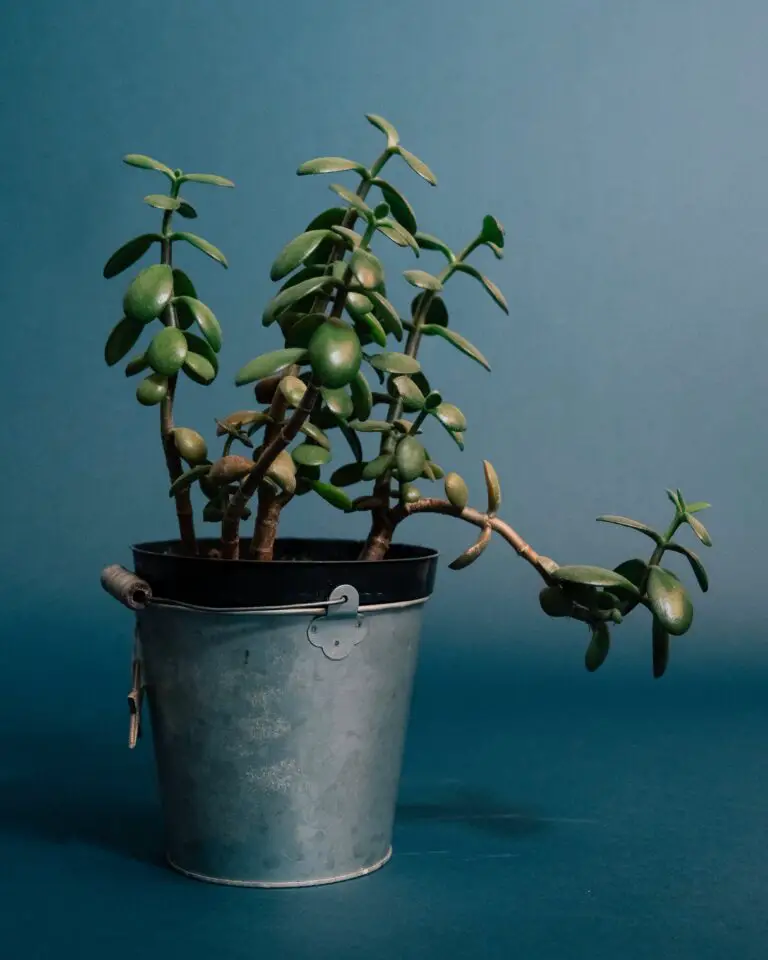
Understanding botanical nomenclature is not about memorizing hard-to-pronounce words but about appreciating the story behind each plant’s name. These names are like little green DNA tests, revealing relationships and histories about our leafy companions. They hold the key to unlocking a deeper kinship with our photosynthesizing pals, one Latin name at a time.
Physical Characteristics: Identifying Crassula
Let’s clear the air right off the bat: there’s a whole universe of diversity within the Crassula genus, each species flaunting its own distinctive panache. But to the untrained eye, these succulent superheroes might just look like a friendly neighborhood Jade Plant. So, what’s the scoop on spotting a genuine Crassula? Buckle up, plant enthusiasts; we’re about to take a detour through the fascinating world of Crassula characteristics.
First on the agenda, let’s talk leaves. Crassula leaves are the stuff of legend—fleshy, glossy, and chubby-cheeked, so to speak. Depending on the species, they can range from a deep emerald green to a subtle blue-grey, and sometimes they even put on a show with vibrant red edges, as if they’ve been delicately dipped in paint. Some Crassulas come in a tightly packed rosette formation, while others might be more spread out, allowing each leaf to bask in its own spotlight.
Now, if you’re lucky enough to witness a Crassula in bloom, you’re in for a treat. These plants aren’t shy when it comes to showing off their flowers, which erupt in clusters of petite, star-shaped charmers. The flowers can be a smorgasbord of colors, with whites, pinks, and even sometimes yellows, but no matter the hue, they know how to party—showcasing a stunning contrast against the green fortress of leaves.
Surveying the plant’s growth habits also reveals more clues. Crassula has a versatile playbook: some grow like mini trees, with woody stems and a towering stature, while others prefer to sprawl or cascade like green waterfalls over the edges of pots. It’s a regular choose-your-own-adventure situation with these plants. For the indoor gardener, it’s like having a piece of the great outdoors right on the windowsill.
And here’s a snapshot to stir your plant-loving soul: imagine a lonely, sun-washed windowsill suddenly brought to life with the addition of a Crassula, its leaves reaching for the light like nature’s solar panels. Feast your eyes on this image:
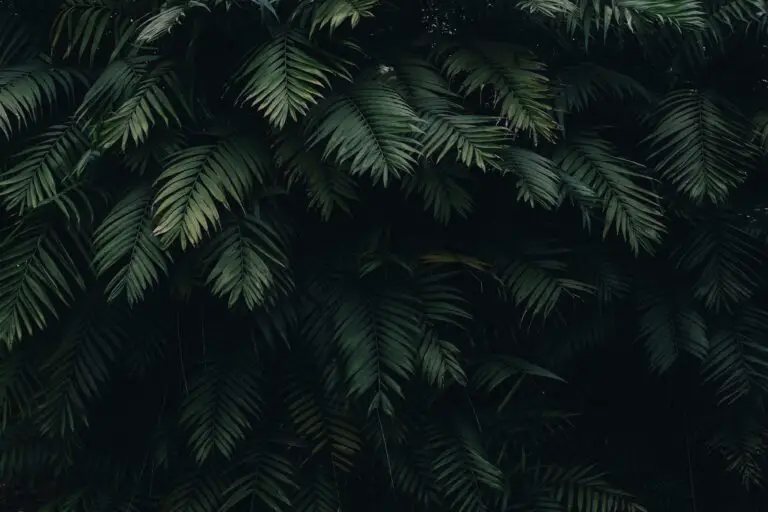
So there you have it, the essential guide to recognizing a Crassula. Delight in the texture of their plump leaves, revel in the joyous burst of their flowers, and admire their adaptable growth. Each one tells a story—a green narrative written in the language of leaves and blooms. Next time you’re out plant-spotting or seeking a new green companion, keep these hallmarks in mind. Who knows, you might just find yourself face-to-face with a Crassula, and that, dear reader, is a moment of botanical bliss.
The Jade Plant: A Classic Varied Example
When we talk about the quaint jade plant, we often picture a robust, glossy green succulent that graces windowsills and office desks alike. It’s a symbol of prosperity in many cultures, but is it just one of the crowd in the Crassula genus? Let’s dive in and spotlight the jade plant, highlighting the characteristics that make it stand out.
The jade plant, known scientifically as Crassula ovata, is but one star in the Crassula family constellation. This succulent is a hardy fellow, with plump leaves that seem to whisper tales of resilience and growth. Unlike some of its daintier relatives, the jade plant boasts a woody stem that matures with time, morphing into a mini tree of sorts, giving a touch of arboreal elegance to its surroundings.
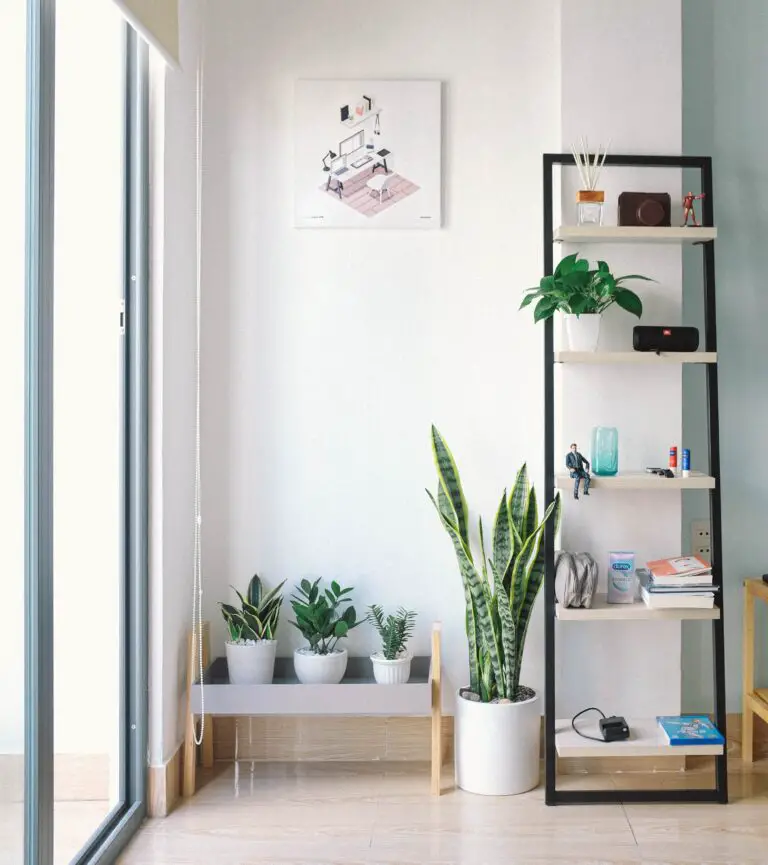
Envision walking into a room where the jade plant sits – it commands attention, not just by its size, but also by the lush, oval leaves that glisten as if polished by the hands of Mother Nature herself. These leaves are the plant’s pièces de résistance, each one a storage unit for water, a key survival tactic for the drought-prone regions it hails from. But it’s not all about toughness; in the right conditions, this succulent will blossom with delicate star-shaped flowers, showing a softer side to its character.
Is the jade plant unique among the Crassula? Absolutely. While it shares some traits with its siblings—such as succulent leaves and an affinity for sunny spots—it has its own distinct persona. Its ability to grow into a sizeable tree-like structure sets it apart, offering a slice of nature’s magnificence in miniature. Home gardeners cherish this quality, often shaping it into a bonsai for an extra dash of artistic flair.
Every jade plant has a story, with some living long enough to become cherished family heirlooms. They’re more than just plants; they’re living testaments to the nurturing care of generations. And while Crassula is a varied and fascinating genus, the jade plant is undoubtedly a classic example of nature’s ingenuity – a true gem that continues to shine through the ages.
Similarities Between Crassula and Jade Plants
When you peep into the world of succulents, the Crassula and the Jade plant often spark a delightful confusion. Is it their thick, glossy leaves that have us doing a double-take, or could it be the zen-like aura they share that calms our inner gardener? Let’s untangle this verdant conundrum by exploring what makes these botanical twinsies so incredibly alike!
Picture this: you’re strolling through your local nursery, and your eyes fall upon a potted beauty with robust leaves that seem to whisper tales of endurance. You might as well have spotted a Crassula or a Jade plant; both have mastered the art of water storage within their plump leaves. The resemblance doesn’t just stop at their drought-savvy designs. Both plants exhibit a handsome, woody stem that gives them a miniatree facade, a characteristic that makes them darlings in the bonsai world.
And let’s talk about their looks! These plant pals flaunt a striking architectural structure that interior designers swoon over. Whether it’s their meaty, oval leaves or a tendency to sprout star-shaped flowers, Crassula and Jade plants can uplift any space with the same effortless flair. Their similarity extends to their color palette, which ranges from deep greens to hues touched with red, bringing a sense of the exotic to our homes and offices.
Oh, and for those of you who’ve been bitten by the green thumb bug, you’ll appreciate the shared simplicity in care requirements. Both revel in well-draining soil and thrive with just the right amount of benign neglect. Watering? Easy-peasy! Let the soil dry out completely, and then give them a drink. Just like siblings with a strong family resemblance, Crassula and Jade plants grow under similar care, and just like that, you’re an ace in the art of succulent parenting.
Their twin-like qualities find them side by side in horticultural usages as well. Both are rockstars of container gardening and have this undeniable knack for warming up both residential and commercial landscapes. Whether nested in a cozy indoor pot or basking boldly in an outdoor rockery, they hold their charm steady and undiminished.
While we’ve been delving into the hearty resemblance between the Crassula and Jade plant, it’s this very puzzle that has enthralled plant lovers for ages. Their shared visual vibe is a botanical echo—a reminder that in the lush tapestry of nature, these plants are close-knit in the best of ways, culminating in a delightful case of mistaken identity that we can’t help but adore.
Differences That Set Them Apart
Are you in a dilemma, trying to figure out if that succulent beauty you’ve been nurturing is a Crassula or a true jade plant? The confusion is understandable since they share a similar lush, green appearance. But don’t let their looks deceive you! Although they are both members of the succulent family, they come from distinct branches of the plant kingdom. Let’s dig into the greenery and find out what truly sets them apart.

Leafy Tales: Deciphering the Green Code
Firstly, the leaves tell a story of their own. Crassula species, which comprise a vast genus of succulents, often have leaves that are smaller, thicker, and sometimes come with a red tinge on the edges, as seen in the popular Crassula ovata. On the other side of the garden, the classic jade plant, known scientifically as Portulacaria afra, features larger, rounded leaves that seem to reach out and soak up the sunshine.
Stems of Strength
Next up are the stems, which uphold the entire structure of these green gladiators. In Crassulas, the stems may grow more compact, supporting tightly packed leaf clusters. Contrastingly, many plants nicknamed “jade” have sturdier, woodier stems that allow them to reach greater heights and often give them a more tree-like appearance. This architecture isn’t just for show; it’s an insight into the resilience and growth pattern of these fascinating plants.
Floral Signatures
Even their flowers bloom with a difference. While both can surprise you with blossoms, the Crassula’s flowers are often smaller and can appear in clusters. In comparison, jade plant blooms are rare but when they do decide to flaunt their colors, they can have a more pronounced, star-like shape that gives off a subtle, sweet scent – a real treat for the plant enthusiast!
The Sun-Worshipping Habits
Getting a little technical, their photosynthetic pursuits vary slightly. Both plants love basking in the sun but have a different rhythm. Crassulas can be more flexible with lighting conditions, sometimes thriving in lower light than their jade counterparts who are hardcore sun-seekers. This sun-worshipping behavior keeps jades in tiptop shape, allowing their deep green color to flourish in vibrant contrasts.
Ultimately, while they may share a common succulent bond, the Crassula species and jade plants stand out in their own unique ways. It’s a fascinating reminder of nature’s diversity – even among plants that seem so similar at first glance. The next time you’re at your local garden center or repotting your own leafy friends, take a closer look, and you might just spot the subtle but distinct differences between Crassula and jade plants. Happy gardening!
Care Tips for Crassula and Jade Plants
When it comes to spoiling our green friends, Crassula and jade plants often top the list of favorites. They’re like the charming twins of the succulent world; they share many similarities but also have their unique quirks. Whether you’re a seasoned gardener or a budding plant enthusiast, knowing how to cater to each of these succulents’ whims can mean the difference between a plant that’s merely surviving and one that’s thriving.
First off, let’s get the basics right. Crassula, a genus with over 200 species, and jade plants, commonly referred to as Crassula ovata, both crave the sun like a beachgoer on a sunny day. They love basking in bright, indirect sunlight. However, the jade plant is slightly more sun-hardy. Picture this: A jade plant, perched on your sunniest windowsill, soaking up those golden rays without breaking a sweat, while its Crassula cousin prefers a spot where it can enjoy the sunlight without the risk of sunburn.
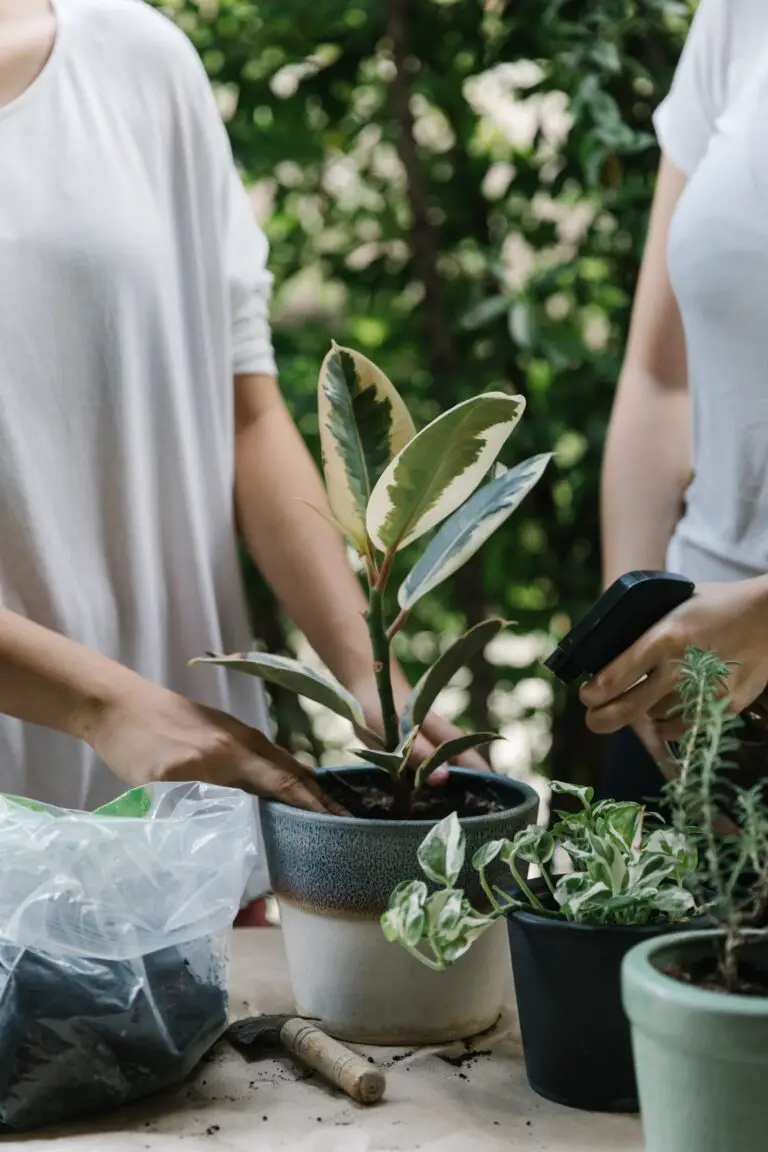
Watering these succulents properly is an art form. Both have an aversion to soggy feet; overwatering is tantamount to plant treason. The jade plant will often require a drink only when the soil has dried out completely, typically every few weeks. In contrast, Crassula species might need slightly more frequent watering. It’s akin to making a perfect cocktail: the right mix of ingredients, timing, and presentation. Or in this case, water, dry spells, and drainage!
When it comes to temperature, imagine a Crassula as the friend who always carries a sweater, ‘just in case’. These plants prefer cooler temps, generally between 60-75°F (15-24°C), and appreciate a bit of a chill at night. Jade plants, however, are the friends who are always dressed just right for the occasion, tolerating a wider range of temperatures and even able to handle dips to 50°F (10°C) without a fuss.
Feeding your Crassula and jade plants is all about understanding their growth cycle. In their growing season (spring and summer), they’re like teenagers during a growth spurt—they need more nutrients. A balanced, water-soluble fertilizer will do wonders here, but taper off as they enter dormancy in the fall and winter. Overfeeding during this period is like offering a hearty meal to someone who’s just finished a buffet—it’s too much goodness!
Now, let’s talk repotting: these plants grow at their own pace, and they’ll let you know when it’s time to move to a larger home. Crassulas might enjoy yearly pot upgrades, while a jade plant can comfortably lounge in the same pot for several years. It’s the difference between a restless traveler and a homebody at heart. The key takeaway? Always ensure that the new pot has excellent drainage, and use a blend of potting soil that is specifically designed for succulents to prevent water retention.
Remember that the right care can turn any plant into a centerpiece that sparks conversations and imbues your home with vitality. Happy gardening!
FAQs: Demystifying Crassula and Jade Plant Confusion
Have you ever found yourself in the midst of a botanical mix-up, squinting at succulents, and wondering, “Are Crassula and Jade plants one and the same?” Don’t fret — you’re not alone! Let’s cut through the greenery and clear the air with some of the most frequently asked questions that have budding plant enthusiasts and seasoned green thumbs alike scratching their heads. Ready? Let’s grow for it!
What’s in a Name? Unraveling the Taxonomy Tango
Say “hello” to the Jade plant, or should we call it Crassula ovata? Here’s a little secret: they ARE the same! Imagine them as twins in nature’s vast family, where ‘Crassula’ is their last name and ‘ovata’ is their first. But just like family reunions, names can be confusing. While ‘Crassula’ refers to the wider genus, ‘Jade plant’ is a nickname we use for the most famous member of this succulent clan.
Getting to Know the Green: A Profile of Our Fleshy Friend
Our plump and pleasant pal is quite the globetrotter, originally hailing from South Africa but making itself at home around the globe. It’s loved for its thick, shiny leaves that seem to whisper secrets of prosperity and good luck. Plus, it’s a survivor; a little neglect teaches it toughness without the tantrums. That’s what makes Jade (aka Crassula) plants the go-to green buddy for those who haven’t quite figured out their plant parent style yet.
The Great Look-Alike: Spotting the Differences
Hold your watering cans! Before you declare all thick-leaved succulents as Jade plants, take a closer look. Our Crassula family has a host of look-alikes with subtle differences. Some are petite, others spread wide like an open book, and some even dazzle with hues that defy the standard green. So next time you’re at the nursery, peek beyond the label — your Jade plant might have a botanical doppelganger!
Crassula vs. Jade: The Care Factor
Whether Jade or another Crassula species snags your heart, they all sing the same tune when it comes to care. Bright light, occasional water, and a dash of love make these succulents dance with joy. Yet, bear in mind: diversity within the family means you might need to fine-tune your approach. Some Crassula cousins prefer a rock concert’s worth of sun, while others are content with the shade of a lazy Sunday picnic.
To get your green gears turning, take a gander at this engaging video breaking down the flowering and fascinating details of our ever-popular Jade Plant (Crassula ovata).
So there you have it, leaf lovers! Whether you call it Crassula, Jade plant, Money Tree, or by any other endearing term, these succulents are a diverse and resilient bunch that whip up enthusiasm in any plant collection. Keep these FAQs in mind and watch as your succulent wisdom, and perhaps your garden, flourishes!

